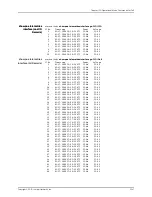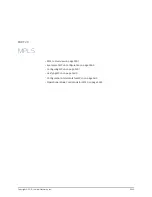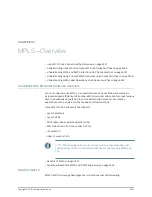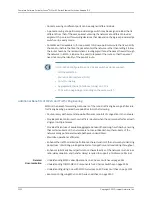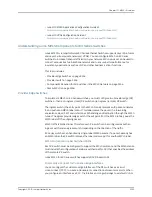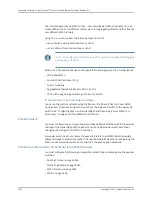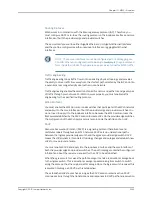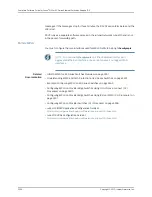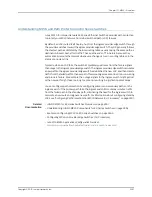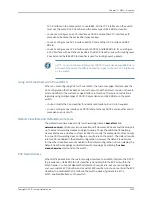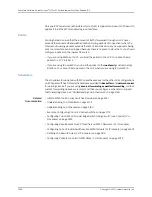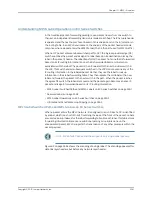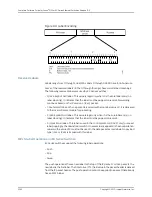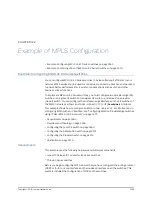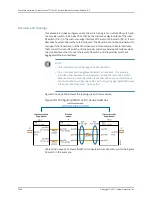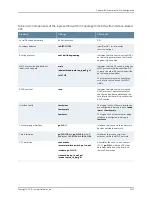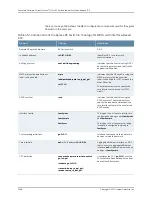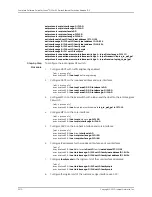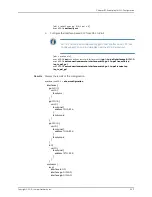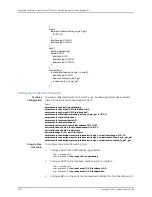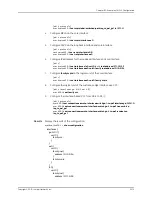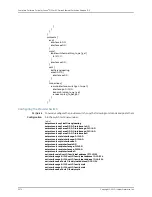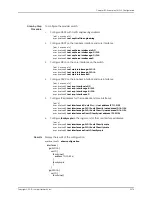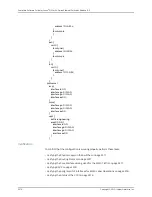
Understanding MPLS Label Operations on EX Series Switches
In the traditional packet-forwarding paradigm, as a packet travels from one switch to
the next, an independent forwarding decision is made at each hop. The IP network header
is analyzed and the next hop is chosen based on this analysis and on the information in
the routing table. In an MPLS environment, the analysis of the packet header is made
only once, when a packet enters the MPLS tunnel (that is, the path used for MPLS traffic).
When an IP packet enters a label-switched path (LSP), the ingress provider edge (PE)
switch examines the packet and assigns it a label based on its destination, placing the
label in the packet’s header. The label transforms the packet from one that is forwarded
based on its IP routing information to one that is forwarded based on information
associated with the label. The packet is then forwarded to the next provider switch in
the LSP. This switch and all subsequent switches in the LSP do not examine any of the
IP routing information in the labeled packet. Rather, they use the label to look up
information in their label forwarding table. They then replace the old label with a new
label and forward the packet to the next switch in the path. When the packet reaches
the egress PE switch, the label is removed, and the packet again becomes a native IP
packet and is again forwarded based on its IP routing information.
•
MPLS Label Switched Paths and MPLS Labels on EX Series Switches on page 3361
•
Reserved Labels on page 3362
•
MPLS Label Operations on EX Series Switches on page 3362
•
Ultimate and Penultimate Hop Popping on page 3363
MPLS Label Switched Paths and MPLS Labels on EX Series Switches
When a packet enters the MPLS network, it is assigned to an LSP. Each LSP is identified
by a label, which is a short (20-bit), fixed-length value at the front of the packet. Labels
are used as lookup indexes for the label forwarding table. For each label, this table stores
forwarding information. Because no additional parsing or lookup is done on the
encapsulated packet, MPLS supports the transmission of any other protocols within the
packet payload.
NOTE:
MPLS for EX Series switches supports only single-label packets.
Figure 83 on page 3362 shows the encoding of a single label. The encoding appears after
data link layer headers, but before any network layer header.
3361
Copyright © 2010, Juniper Networks, Inc.
Chapter 121: MPLS—Overview
Summary of Contents for JUNOS OS 10.3 - SOFTWARE
Page 325: ...CHAPTER 17 Operational Mode Commands for System Setup 229 Copyright 2010 Juniper Networks Inc ...
Page 1323: ...CHAPTER 56 Operational Mode Commands for Interfaces 1227 Copyright 2010 Juniper Networks Inc ...
Page 2841: ...CHAPTER 86 Operational Commands for 802 1X 2745 Copyright 2010 Juniper Networks Inc ...
Page 3367: ...CHAPTER 113 Operational Mode Commands for CoS 3271 Copyright 2010 Juniper Networks Inc ...
Page 3435: ...CHAPTER 120 Operational Mode Commands for PoE 3339 Copyright 2010 Juniper Networks Inc ...
Page 3529: ...CHAPTER 126 Operational Mode Commands for MPLS 3433 Copyright 2010 Juniper Networks Inc ...

